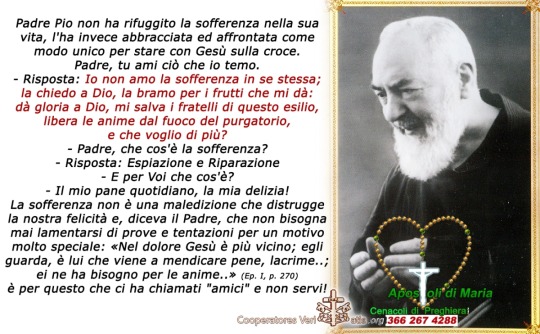#theologia
Text
Lamella orphica sive aurea Hipponii (De Mnemnosynes lacu): «Μναμοσύνας τόδε ἱερόν»
Μναμοσύνας τόδε ἱερόν, ἐπεὶ ἂμ μέλληισι θανεῖσθαι.
Εἶς Ἀίδαο δόμους εὐήρεας, ἔστ’ ἐπὶ δεξιὰ κρήνα,
πὰρ δ’ αὐτὰν ἑστακυῖα λευκὰ κυπάρισσος.
ἐνθα κατερχόμεναι ψυχαὶ νεκύων ψύχονται.
Ταύτας τᾶς κράνας μηδὲ σχεδὸν ἐνγύθεν ἔλθηις.
Πρόσθεν δὲ εὑρήσεις τᾶς Μναμοσύνας ἀπὸ λίμνας
Ψυχρὸν ὕδωρ προρέον. φύλακες δὲ ἐπύπερθεν ἔασι,
Τοὶ δέ σε εἰρήσονται ἐνὶ φρασὶ πευκαλίμαισι
ὅττι δὲ ἐξερέεις Ἄϊδος σκότος ἠερόεντος.
εἶπον «ὑὸς Βαρέας καὶ Οὐρανοῦ ἀστερόεντος,
δίψαι δ’ εἰμ’ αὖος καὶ ἀπόλλυμαι, ἀλλὰ δότ’ ὦκα
ψυχρὸν ὕδωρ πιέναι τῆς Μνημοσύνης ἀπὸ λίμνης.»
καὶ δή τοι ἐλεοῦσιν ὑπὸ χθονίωι βασλῆι,
καὶ δή τοι δώσουσι πιὲν τᾶς Μναμοσύνας ἀπὸ λίμνας
καὶ δὴ καὶ σὺ πιὼν ὁδὸν ἔρχεαι ἅν τε καὶ ἄλλοι
μύσται καὶ βάχχοι ἱερὰν στείχουσι κλεινοί.
[HIS] Ésta es la empresa sagrada de Mnemósine cuando esté a punto de morir. A la bien construida casa de Hades te dirigirás: en la derecha hay una fuente, y junto a ésta un blanco ciprés erguido. Allí, cuando bajan, se refrescan las almas de los muertos. No vayas cerca de esta fuente ni un poco, sino que más adelante encontrarás agua que fluye fresca de la laguna de Mnemósine. Unos guardianes se encuentran en su orilla. Estos te preguntarán con ánimo sagaz por qué exploras la oscuridad sombría del Hades. Diles: «Soy hijo de la Tierra y del Cielo estrellado. Estoy sediento y me muero. Pues bien, dadme, de prisa a beber agua fresca de la laguna de Mnemósine.» Y en verdad que le preguntarán a la reina subterránea, y en verdad que te darán a beber de la laguna de Mnemósine. Y también, en verdad, tú, tras haber bebido, te irás por la sagrada vía por la que también los otros iniciados y bacantes ilustres avanzan.
youtube
youtube
#Auctor incertus#Lamella orphica Hipponii#Lamella aurea Hipponii#De Mnemnosynes lacu#Laminetta orfica di Ipponio#Laminetta d'oro di Ipponio#saec. V a.Ch.n.#scriptum#carmen#Theologia#Mytologia#Graece#Mnemosyne#Alba Sánchez Guerrero#Tyrtarion
0 notes
Text
Comparing religious and mythological traditions gives a lot of people turbo brainworms, because they end up thinking that the common elements they like the best are the Core Essence of Religion Ever, and from there they start thinking that long ago there was this ideal civilization where everyone practiced this supposedly pure and uncorrupted religion that literally has never existed anywhere outside of their own imaginations.
#religion#mythology#spirituality#brain bugs#comparative religion#comparative mythology#prisca theologia#perennial philosophy#history#pseudohistory
128 notes
·
View notes
Note
I've been avoiding ChatGPT only because it's inhuman. What makes you say it's demonic?
To answer this we must first dismiss the wholly unchristian philosophy of evil called Manichaeism, in which the forces of good and evil are battling for control- this is very common, and unconsciously accepted by many Christians. Think of all the media where separate forces of good and evil are fighting to triumph over the other. This conception of evil is incompatible with Christian doctrine. If there is only one God, and he has created everything, and all he creates is good, then he cannot have created evil. St Augustine posited that evil is the absence of good- the privation or perversion of something that was good in its creation, but is now without that goodness, no longer good. Evil is created when our will, which is distorted by our fallen sinful nature turns away from the true good of God, and towards apparent goods - pleasure, monetary gain, false teachings etc. ad infinitum. Thomas Aquinas writes extensively on this. Evil is created when we turn away from God’s creation which is truly good, towards something we perceive to be good. Artificial intelligence is a perversion of the human intelligence that God gave us. Therefore human intelligence is good, as it was created by the will of God, and artificial intelligence is without that good, and therefore evil. Demons are fallen angels- they have turned away from God, therefore that which is demonic is that which has turned away from the true good of God. Frodo Baggins said it best in the Return of the King, speaking about Tolkiens devil and demon analogue, Morgoth and the Orcs. “The Shadow that bred them can only mock, it cannot make: not real new things of its own.” A truly Augustinian take, Frodo!
#traditional catholic#christian blog#mine#catholic#asks#Catholic asks#catholic theology#st augustine#the confessions#summa theologiae#thomas aquinas#Aquinas#Augustinian theology#catholicism#catholic saints#artificial intelligence#ai#ai creation#ai chatgpt#lotr#lord of the rings#j r r tolkien#tolkien quotes#tolkein#the return of the king
34 notes
·
View notes
Text

#traditional catholicism#traditional catholic images#traditional catholic saints#traditional catholic father's and doctors of the church#st. thomas aquinas#traditional catholic saints images#traditional catholic saints quotes#the dominican order#father of the summa theologia#dominican saints
18 notes
·
View notes
Text

4 notes
·
View notes
Text
Sometimes, when I show people the stuff I’ve collected throughout the years, they go “whOAAAA, this is like 300usd from ebay in such a good condition, how could you afford it?!?!?”
And I’m like... “I bought it when it came out in 2005″
Like, when it comes to true anime olds, I’m not. I had anime on VHS, yes, but I never traded recordings and fansubs by mail. Like, I was only born in 84, dammit. But I’ve been actively collecting since 2000. That’s 23 years now. I didn’t start yesterday.
Also, I don’t own anything truly valuable. My taste is too random and my interests too wide-spread for me to actually focus on anything like that. Also, I could easily refute that “this is like 300usd!” claim by googling and finding that same art book at about 85usd so don’t believe all the hype either :P
#it's fabrica theologiae#trinity blood art book#the example in this post I mean#ye it's expensive#but not much more than it was back then#bc it was just an expensive ass art book period#it hasn't increased in value that much over the years#it might have#if not for the entire content being available online anytime anywhere#so the only people who go after books these days are true collector minds#those who want a physical collection#but most are content with having stuff digitally now#so the collector value of books has probably gone down a bit
5 notes
·
View notes
Text
Umberto Eco on Fascist Perennialism
“The first feature of Ur-Fascism is the cult of tradition. Traditionalism is of course much older than fascism. Not only was it typical of counter-revolutionary Catholic thought after the French revolution, but it was born in the late Hellenistic era, as a reaction to classical Greek rationalism. In the Mediterranean basin, people of different religions (most of them indulgently accepted by the Roman Pantheon) started dreaming of a revelation received at the dawn of human history. This revelation, according to the traditionalist mystique, had remained for a long time concealed under the veil of forgotten languages – in Egyptian hieroglyphs, in the Celtic runes, in the scrolls of the little known religions of Asia.
This new culture had to be syncretistic. Syncretism is not only, as the dictionary says, "the combination of different forms of belief or practice"; such a combination must tolerate contradictions. Each of the original messages contains a silver of wisdom, and whenever they seem to say different or incompatible things it is only because all are alluding, allegorically, to the same primeval truth.
As a consequence, there can be no advancement of learning. Truth has been already spelled out once and for all, and we can only keep interpreting its obscure message.
One has only to look at the syllabus of every fascist movement to find the major traditionalist thinkers. The Nazi gnosis was nourished by traditionalist, syncretistic, occult elements. The most influential theoretical source of the theories of the new Italian right, Julius Evola, merged the Holy Grail with The Protocols of the Elders of Zion, alchemy with the Holy Roman and Germanic Empire. The very fact that the Italian right, in order to show its open-mindedness, recently broadened its syllabus to include works by De Maistre, Guenon, and Gramsci, is a blatant proof of syncretism.
If you browse in the shelves that, in American bookstores, are labeled as New Age, you can find there even Saint Augustine who, as far as I know, was not a fascist. But combining Saint Augustine and Stonehenge – that is a symptom of Ur-Fascism.”
--Umberto Eco, Ur Fascism
#umberto eco#ur fascism#Fascism#Traditionalism#Perennialism#Gnostism#Gnosis#neoplatonism#antiplatonism#western esotericism#prisca theologia#syncretism#mysticism#marx and mysticism
17 notes
·
View notes
Text
S. Th. III, q. 35, a. 1
Sobre el nacimiento de Cristo
¿El nacimiento conviene más a la naturaleza que a la persona?
El nacimiento puede atribuirse a uno de dos modos: uno, como a sujeto; otro, como a término. Como a sujeto se atribuye sin duda al ser que nace. Y esto pertenece a la persona, no a la naturaleza. Por consiguiente, siendo el nacimiento una especie de generación, así como una cosa es engendrada para que exista, así también nace para existir. Pero el existir es propio del ser subsistente, pues de la forma no subsistente solo se dice que existe en cuanto que es algo. Y persona o hipóstasis significan algo que subsiste, mientras que naturaleza da a entender la forma en que una cosa subsiste. Y por esto el nacimiento se atribuye, como a sujeto propio del nacer, a la persona o hipóstasis, no a la naturaleza.
Pero el nacimiento se atribuye a la naturaleza como a término. En efecto, el término de la generación, y de todo nacimiento, es la forma, pues la naturaleza se define como una forma. Por lo que se dice que el nacimiento es vía para la naturaleza, como es manifiesto por el Filósofo en el II Phys., porque el empeño de la naturaleza termina en la forma, o en la naturaleza específica.
A las objeciones:
1. Debido a la identidad que se da en Dios entre naturaleza e hipóstasis, a veces se pone la naturaleza por la persona o hipóstasis. Y, de acuerdo con esto, dice Agustín que la naturaleza divina es concebida y nace, porque la persona del Hijo fue concebida y nació según la naturaleza humana.
2. Ningún movimiento o cambio se denomina por razón del sujeto que se mueve, sino por el término del movimiento, del que obtiene la especie. Y por esto el nacimiento no se denomina por la persona que nace, sino por la naturaleza en que se termina el nacimiento.
3. Hablando con propiedad, la naturaleza no empieza a existir; es más bien la persona la que comienza a existir en alguna naturaleza. Porque (...) se entiende por naturaleza aquello por lo que un ser existe, y por persona aquello que tiene una subsistencia.
2 notes
·
View notes
Text
“On this way the good love themselves, as to the inward man, because they wish the preservation thereof in its integrity, they desire good things for him, namely spiritual goods, indeed they do their best to obtain them, and they take pleasure in entering into their own hearts, because they find there good thoughts in the present, the memory of past good, and the hope of future good, all of which are sources of pleasure. Likewise they experience no clashing of wills, since their whole soul tends to one thing.”
— St. Thomas Aquinas: ST, II-II, q. 25, a. 7, resp.
3 notes
·
View notes
Text
La sofferenza theologia crucis negli insegnamenti e nella vita di san Padre Pio
Ringraziando Sr. Maria Immacolata Savanelli, FI, condividiamo questa raccolta-meditata e pubblicata dal Settimanale di Padre Pio nel Numero 8 del 25 febbraio 2018
Padre Pio non ha rifuggito la sofferenza nella sua vita, l’ha invece abbracciata ed affrontata come modo unico per stare con Gesù sulla croce.Padre, tu ami ciò che io temo.
Risposta: Io non amo la sofferenza in se stessa; la chiedo a…

View On WordPress
#corredenzione#dottrina#Padre Pio da Pietrelcina#sofferenza#sofferenza vicaria#teologia della croce#theologia crucis
0 notes
Text

TERCEPAT, Call 0859-6284-8598, Jasa Olah Data Skripsi Sekolah Tinggi Theologia Nazarene Indonesia Konsultanskripsi.id
0 notes
Text
Card. Robertus Bellarminus – De arte bene moriendi (a Societate Iesu), I
De primo praecepto artis bene moriendi, quod est, ut qui cupit bene mori, bene vivat
Aggredior nunc praecepta artis bene moriendi. Distribuemus autem hanc artem in partes duas: in priore trademus praecepta, quibus utendum erit dum bene valemus; in posteriore trademus ea, quibus opus erit cum morbo periculoso laboramus, ut credibile sit mortem esse prae foribus. Ac in parte priore trademus primum praecepta quae pertinent ad virtutes; deinde ea quae pertinent ad Sacramenta: his enim duobus maxime iuvamur, tum ad bene vivendum, tum ad bene moriendum.
Sed his omnibus praeponendum esse videtur generale praeceptum, ut bene vivat qui bene mori desiderat. Nam cum nihil sit mors nisi vitae finis, certe omnis qui usque in finem bene vivit, bene moritur; neque potest male mori qui nunquam male vixit: quemadmodum etiam, qui male semper vixit, male moritur; nec potest non male mori qui numquam bene vixit.
Id quod in omnibus similibus rebus cernimus: omnis enim qui rectam viam tenet, ad locum, ad quem tendit, sine errore pertingit; contra vero qui a recta via aberrat, numquam exitum viae inveniet. Et qui diligenter in studia scientiarum incumbit, brevi doctus, vel etiam et doctor evadit; et qui scholas frequentat, sed ad percipiendas disciplinas animum non accomodat, oleum et operam perdit.
Sed obiiciet fortasse aliquis boni latronis exemplum, qui semper male vixit, et bene beateque vitam finivit. Non ita est quin potius pius ille latro pie sancteque vixit, et ea de causa pie quoque sancteque mortem obivit: nam tametsi partem vitae maiorem in sceleribus consumpserit, tamen partem aliam vitae usqueadeo sancte traduxit, ut peccata praeterita facile purgaverit et merita eximia comparaverit. Nam et charitate in Deum flagrans, Christum ab impiorum calumniis palam defendit; et charitate in proximum pariter flagrans, sodalem suum blasphemantem admonuit et corripuit, atque ad meliorem vitam revocare conatus est. Vivebat enim vitam hanc mortalem, cum sodali suo diceret: Neque tu times Deum, qui in eadem damnatione es? Et nos quidem iuste, nam digna factis recipimus: hic vero nihil male gessit. Neque mortuus erat, sed vivebat idem ipse latro, cum praeclaram illam vocem emisit, Christum confitens et invocans: Domine, memento mei cum veneris in regnum tuum. Itaque videtur hic unus fuisse ex illis qui ultimi venerunt ad vineam et ante primos accepere mercedem.
#Robertus Bellarminus#De arte bene moriendi#saec. XVII#1620#scriptum#philosophia#theologia#Cardinalis
0 notes
Text
San Tommaso, la cattedra su cui s’infrange l’errore
«Sebbene la verità della fede cristiana superi la capacità della ragione, tuttavia i principi naturali della ragione non possono essere in contrasto con codesta verità», insegnava san Tommaso d’Aquino (1225-1274), il Doctor Angelicus come lo chiamarono i suoi contemporanei. Presentiamo la storia e l’insegnamento di questo Santo eccezionale.
(more…) “”

View On WordPress
#doctor angelicus#dottori della chiesa#San Tommaso d&039;Aquino#santi domenicani#santità#somma teologica#Summa Theologiae#teologia#Tommaso d’Aquino
0 notes
Text

AHLINYA, Call 0859-6284-8598, Jasa Konsultan Penelitian Sekolah Tinggi Theologia Injili Indonesia Pontianak Konsultanskripsi.id
0 notes
Text

He's talking about the Love of God! 😏
#traditional catholicism#traditional catholic images#traditional catholic saints#traditional catholic father's and doctors of the church#st. thomas aquinas#the dominican order#dominican saints#the father of the summa theologia
1 note
·
View note
Link
San Alfonso nasce a Napoli il 27 settembre 1696 e muore a Nocera de' Pagani, Salerno, l' 1 agosto 1787, suo dies natalis e data della sua celebrazione.
0 notes